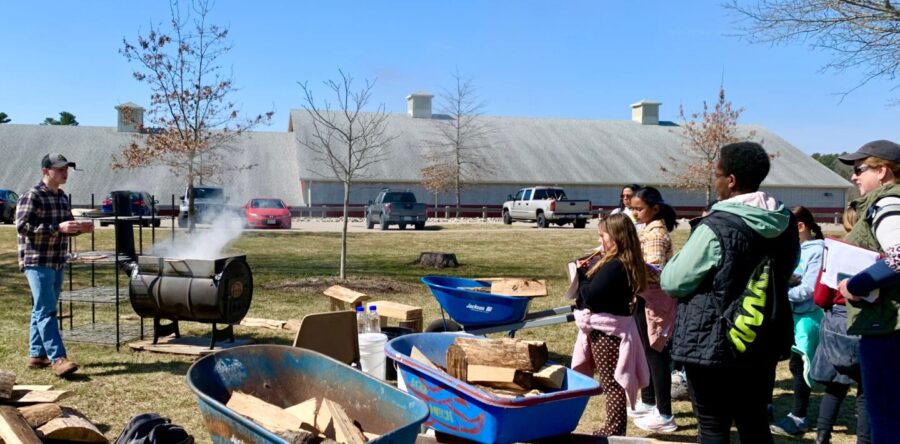by Elizabeth Connolly
Hometown Weekly Reporter
Fourth graders from Fisher School recently had the opportunity to learn the process of maple sugaring from students at the Norfolk County Agricultural School (NCAS). Through a special collaboration between the schools, the fourth graders were able to head over to NCAS and explore 13 stations that explained every facet of the process, from identifying maple trees to evaporating the sap to make syrup.
“The high schoolers at NCAS have worked hard to be able to present their knowledge and expertise of maple sugaring to the fourth graders at Fisher Elementary School. This science collaboration supports both curriculums at each school,” explained Kathy McDonald, fourth grade teacher at Fisher.
It was easy to see how much each school enjoyed the partnership, as educators, students, and even many chaperones appeared quite interested in the stations that were set up. Each NCAS presenter was personable, friendly, and knowledgeable on the process, which sparked many clever questions and comments from the younger students.
The stations were all interesting and informative, and you could tell the NCAS students worked hard on them, but the two most popular were the sap and the maple syrup tasting. Though the maple syrup was the clear winner for taste, the sap provided the best commentary. “When you first drink it, it tastes not good. But then it gets better,” remarked one Fisher student. “It tastes like water with a tiny bit of sugar in it,” said another. “I actually have friends that like to put it in their coffee,” one high school presenter stated.
Maple sugaring is an old process. Thanks to journals kept by early explorers, we know that it dates back to at least the 1600’s, when Native Americans taught some of the first settlers how to make their own maple products. It’s a fairly arduous procedure that involves identifying and tapping the trees at a precise time year, collecting the sap, and then boiling it down into syrup. Since sap is 98% water, you need a lot of it - 40 gallons to make one gallon of maple syrup, to be exact - and the evaporation portion is time consuming. But anyone that’s enjoyed pure, fresh maple syrup on top of their favorite breakfast will likely tell you it's worth it. Judging by the animated conversations and wide smiles on the faces of the fourth graders as they walked by to school, they’d likely agree.























